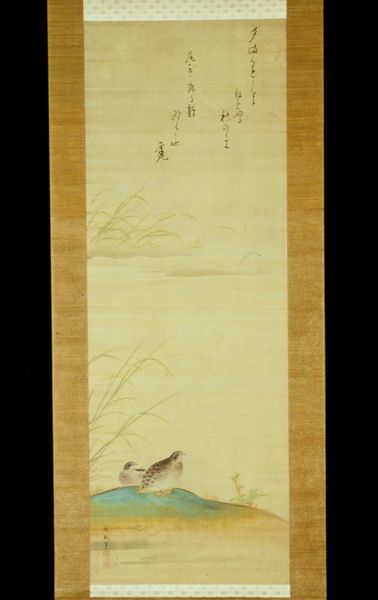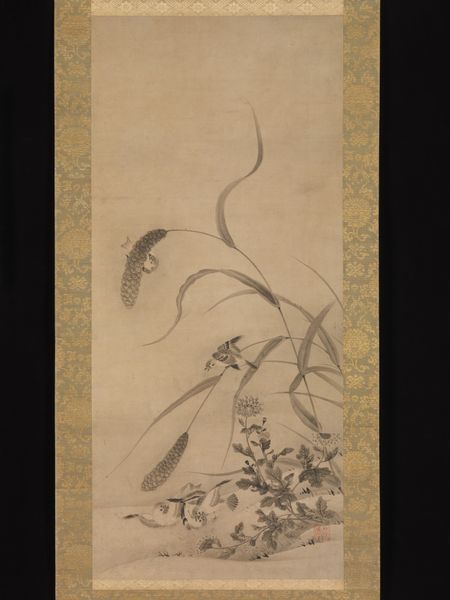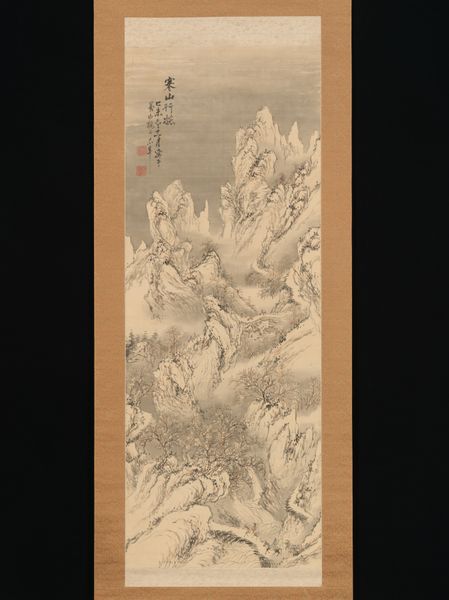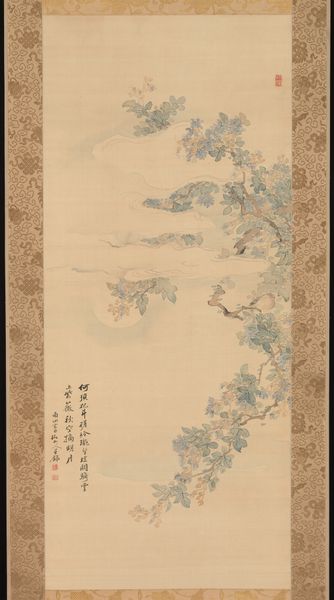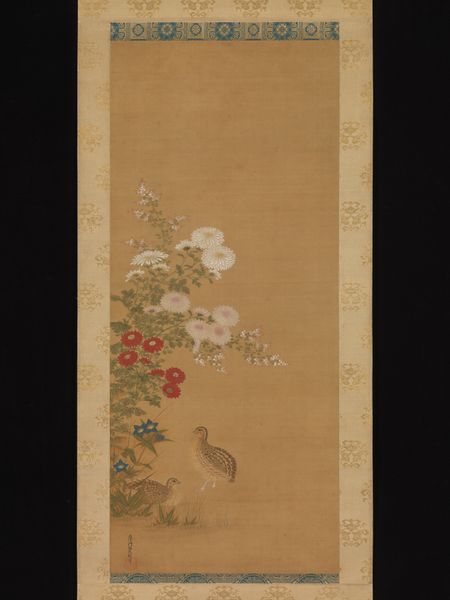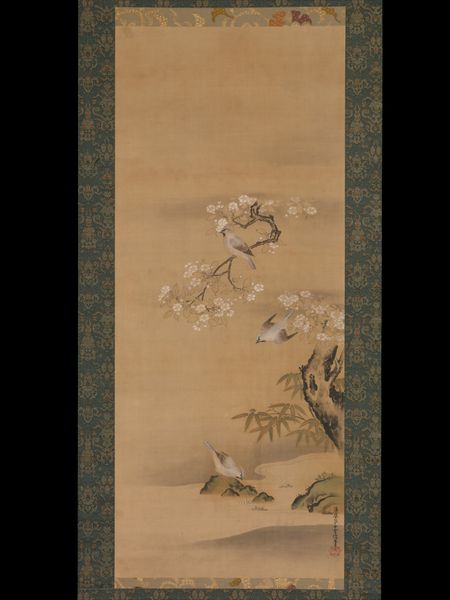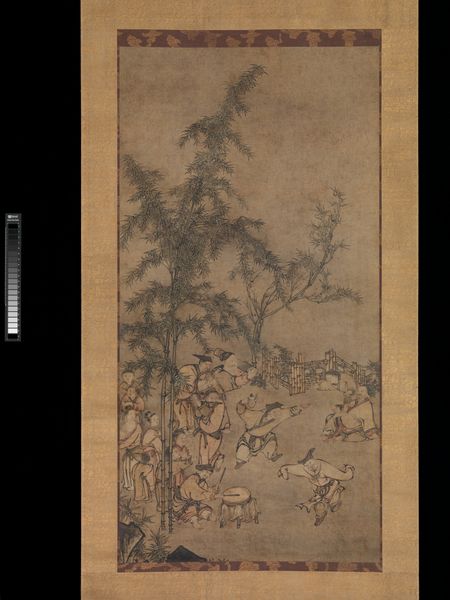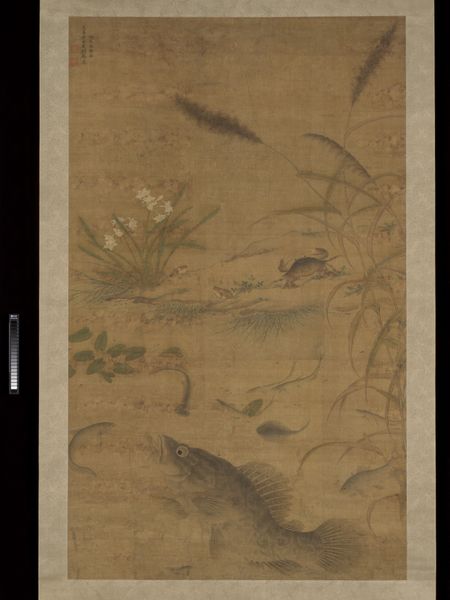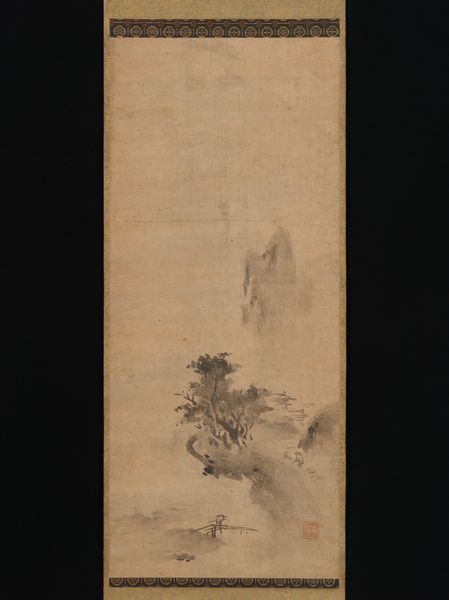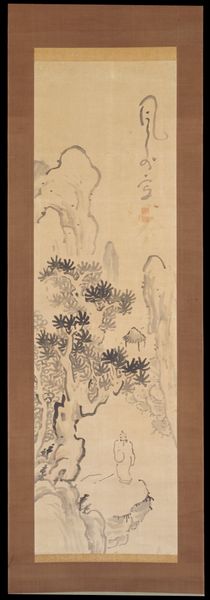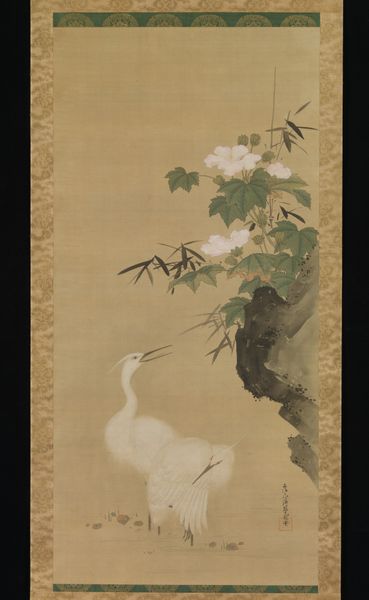![Boy Riding Water Buffalo [right of a pair] by Hanabusa Itchō](/_next/image?url=https%3A%2F%2Fd2w8kbdekdi1gv.cloudfront.net%2FeyJidWNrZXQiOiAiYXJ0ZXJhLWltYWdlcy1idWNrZXQiLCAia2V5IjogImFydHdvcmtzL2I4ZmJmMDZhLWYzMmUtNDA1MS1hM2ZiLWE4N2ZhMWJiOTc4OS9iOGZiZjA2YS1mMzJlLTQwNTEtYTNmYi1hODdmYTFiYjk3ODlfZnVsbC5qcGciLCAiZWRpdHMiOiB7InJlc2l6ZSI6IHsid2lkdGgiOiAxOTIwLCAiaGVpZ2h0IjogMTkyMCwgImZpdCI6ICJpbnNpZGUifX19&w=3840&q=75)
Boy Riding Water Buffalo [right of a pair] late 17th - early 18th century
0:00
0:00
drawing, paper, ink-on-paper, ink
#
drawing
#
narrative-art
#
asian-art
#
landscape
#
ukiyo-e
#
japan
#
figuration
#
paper
#
ink-on-paper
#
ink
#
earthy tone
#
monochrome
Dimensions: 40 3/4 x 15 in. (103.51 x 38.1 cm) (painting)
Copyright: Public Domain
Editor: This is "Boy Riding Water Buffalo," a late 17th- or early 18th-century ink-on-paper drawing by Hanabusa Itchō. It feels so light and airy. What's interesting to you about it? Curator: The water buffalo in Asian art represents strength, diligence, and rural life. Note how the boy stands on the buffalo – it is a potent symbol of mastery and harmony with nature, but there's also a palpable freedom suggested by the image. The negative space—so characteristic of Japanese ink painting—becomes significant. What emotions are conjured for you by that empty space? Editor: A sense of longing, maybe? Like the figures are small within something vast and unknowable. Curator: Exactly! The composition directs our eyes upward, toward a pair of birds flying away. Birds, often messengers between heaven and earth, enhance the feeling of freedom. How might these symbols reflect the cultural values of the time? Editor: Maybe it speaks to a desire for a simpler, more connected existence away from courtly life? Curator: Precisely. And notice the dynamic energy created through the subtle use of ink washes. What feelings do they convey? Editor: There's a real sense of movement. I can almost feel the buffalo walking, and the boy gesturing toward those birds! I had no idea this simple drawing could carry so many layers of meaning. Curator: Yes, symbols reveal cultural memory. I’m glad we could find some of that meaning here today. Editor: Thank you for guiding me in this process!
Comments
No comments
Be the first to comment and join the conversation on the ultimate creative platform.
